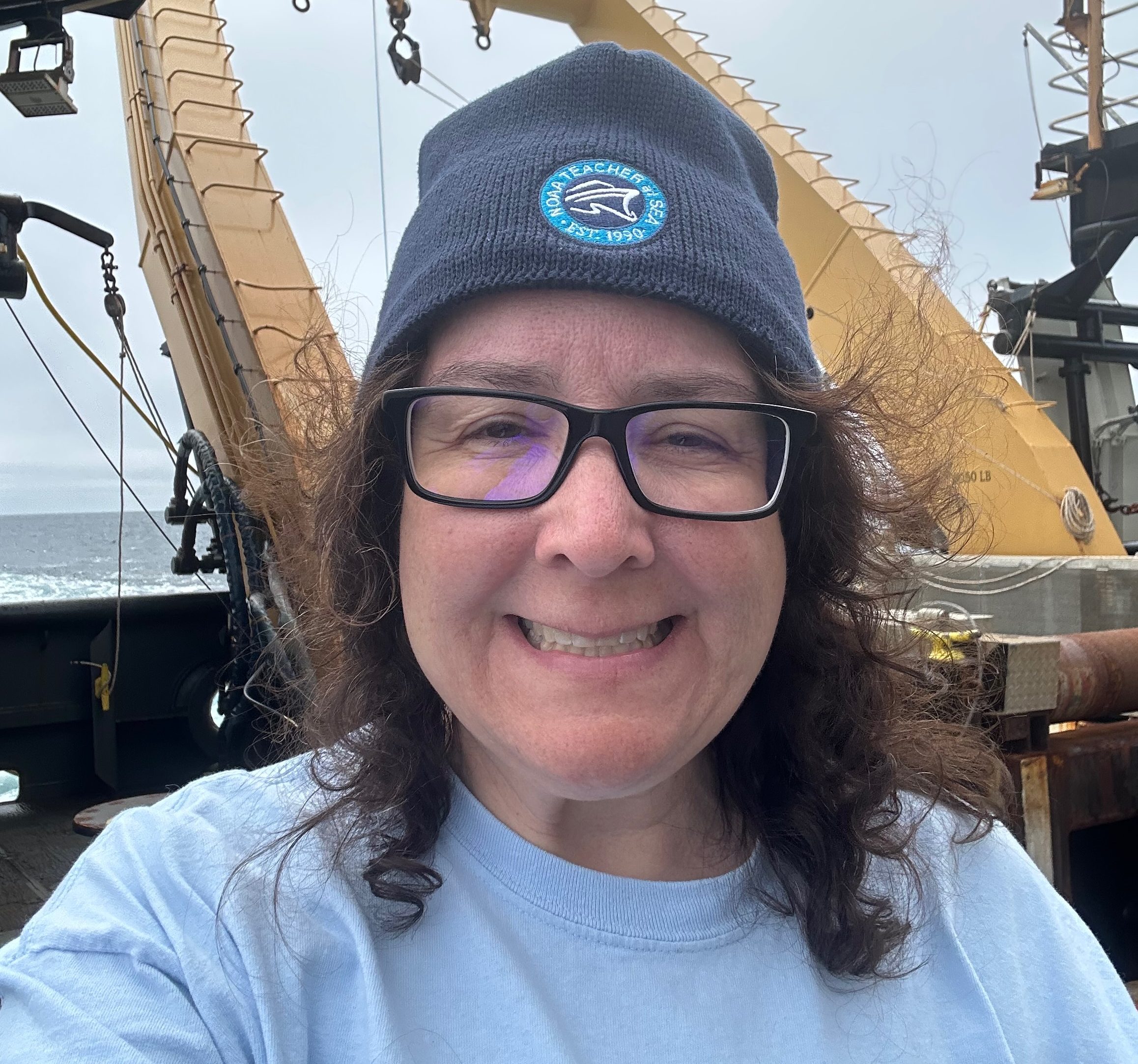This quilt is part of my JOIDES Resolution Expedition 390 (South Atlantic Transect I) collection. by clicking on the tag 390 quilt, you can see all the quilts I made before and after my two months on the South Atlantic Ocean.
Summary: This quilt is a nod to three scientific drilling vessels that enabled scientists to access deep-sea core material, significantly advancing knowledge of our ocean world. Starting with Project Mohole in 1961 and the drillship CUSS 1, the science community continued basic research into the history of ocean basins with Glomar Challenger through the Deep Sea Drilling Project (DSDP, 1968-1983). Scientific ocean drilling’s next chapter through the ODP/IODP/IODP programs were conducted with JOIDES Resolution (1984-2024).

Critical to the success of any deep-sea drilling mission is not just the scientists and analyses of samples collected, but the ship itself. This quilt pays homage to the ships that started the scientific community on a journey of learning about our ocean environments through analyses of sediment and rock samples brought to the surface in continuous cores. The drilling barge CUSS 1 achieved success in 1961 during Phase 1 of Project Mohole, showing that deep ocean drilling was a viable means of obtaining geological samples. For 25 years (1968-1983), Glomar Challenger was the research vessel that visited some 624 sites in the Atlantic, Pacific, and Indian Ocean basins. One of the most significant findings from this ship in the Deep Sea Drilling Project (DSDP) was the evidence to support the theory of plate tectonics (DSDP Leg 3, the legacy cruise for Expedition 390). JOIDES Resolution began as a scientific drill ship in 1985 and will be concluding its operations under the International Ocean Discovery Program (IODP) in 2024, with significant outcomes still to be determined for years to come.
For a summary of contributions and discoveries from ocean drilling expeditions, please see this open access article, Fifty Years of Scientific Ocean Drilling, published in 2019 in Oceanography Magazine.
The photos were printed on fabric through Spoonflower.com. A license was purchased for the use of the image of CUSS 1 (Shutterstock’s standard editorial license/Fritz Goro/The LIFE Picture Collection via Getty Images, purchased here). The image of Glomar Challenger is from the IODP JRSO MerlinOne photo archive (Glomar Challenger.tif). The image of JOIDES Resolution is also from MerlinOne (Credit: Thomas Ronge, IODP JRSO [Photo ID: 064_exp398_C0193.jpg]).
The gold-colored fabric represents the drill pipe which connects each ship to the seafloor during the drilling process. As the pipe rotates clockwise during drilling activity, the quilting “ribbon candy” pattern was used to represent the rotating pipe and bubbles for the disturbance in the water.

The batik border fabric for each ship (Northcott Banyan Batik Ketan) was purchased at Peak to Peak Stitching in Estes Park, CO. The white border of each photo is a Three Cats Shweshwe fabric manufactured by Da Gama Textiles in South Africa. For Expedition 390, JOIDES Resolution departed from and returned to port in Cape Town, South Africa.
This quilt was sewn as a Civil War potholder quilt. This technique first appeared in the mid-nineteenth century where a quilt was constructed from individually pieced/quilted/bound blocks (termed potholder quilts). This was a quick method to make a quilt, where many quilters could come together with their smaller quilt blocks and whip stitch the blocks together from the back.
Quilt measures 37 inches wide by 50 inches tall and was completed November 18, 2023.





